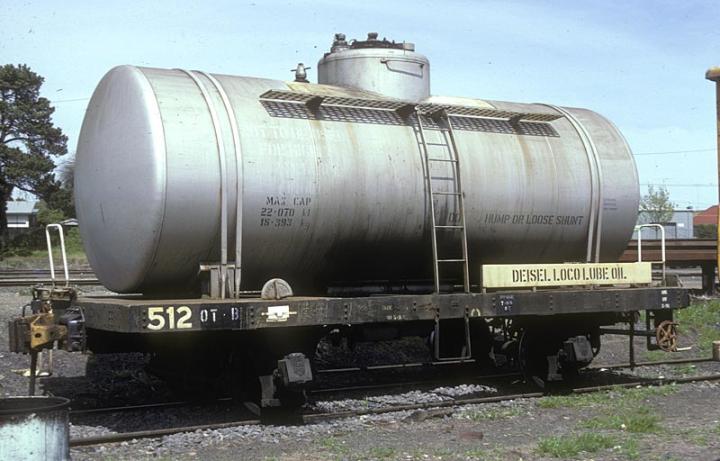
Greetings folks, and hopefully all of you are well with the state of things in this world presently. As of today (4/28/2020) I have finished the final assembly of a 2-axle tank car kitbash, comprising the stubby shell of an Aristocraft 40101 20ft tank car, and the chassis of a Bachmann Lil-Big-Hauler 2-axle passenger coach. This brown tanker is the product of curiosity and desiring more tank wagons, (always need more!) as well as the confirmation of Aristo’s bobber caboose chassis not looking all that great under anything but their cabeese, hence the transplant.

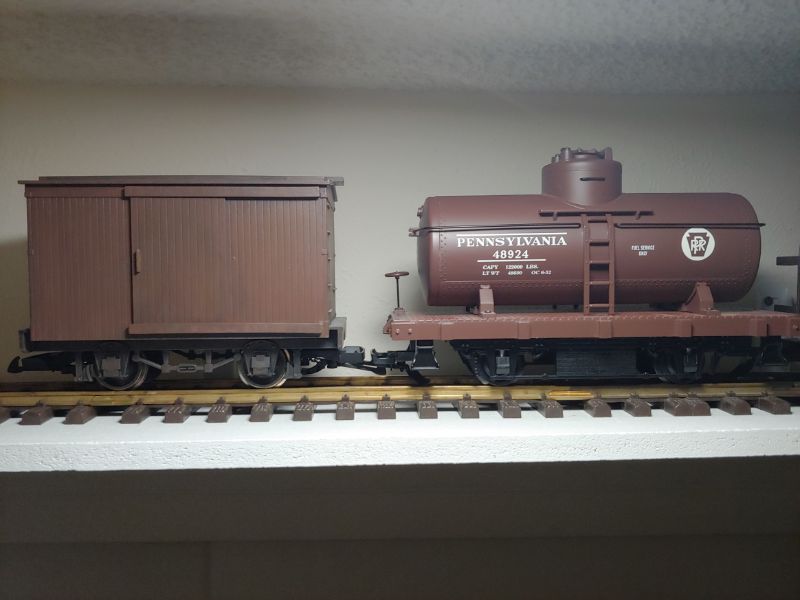
The initial inspection and comparison to my modified British tank wagon (on 31mm axles for those curious) and other cars. Right away the flat body, overweight brake wheel, caboose steps and faux toolboxes looked… Funky altogether. The caboose chassis stuffed under short bodies to my eyeballs is not the greatest combination, and as such, the caboose/flat thingy was the first thing to go, and was removed and later sold on the 'Bay. What occurred next was mad science consisting of plopping the tank onto various flat chassis to see what worked and didn’t.
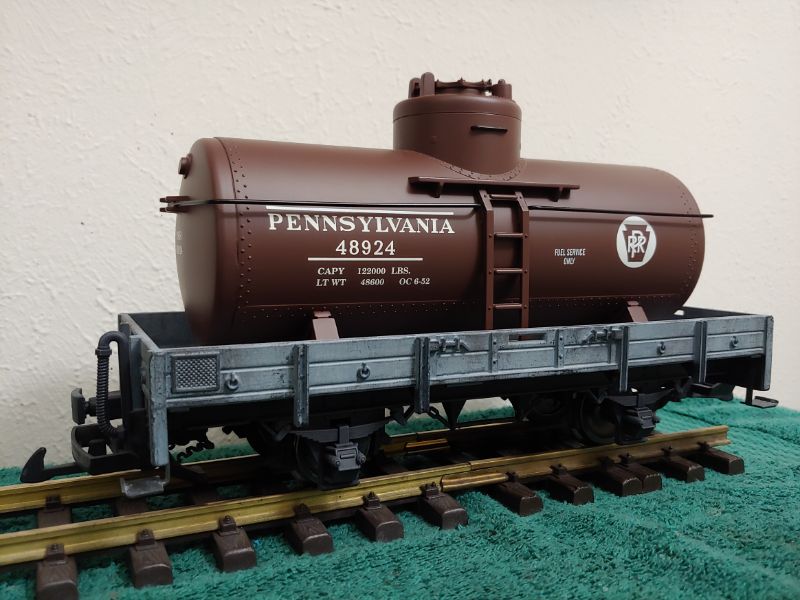
First up was an LGB Euro 2-axle flatcar. Nope.
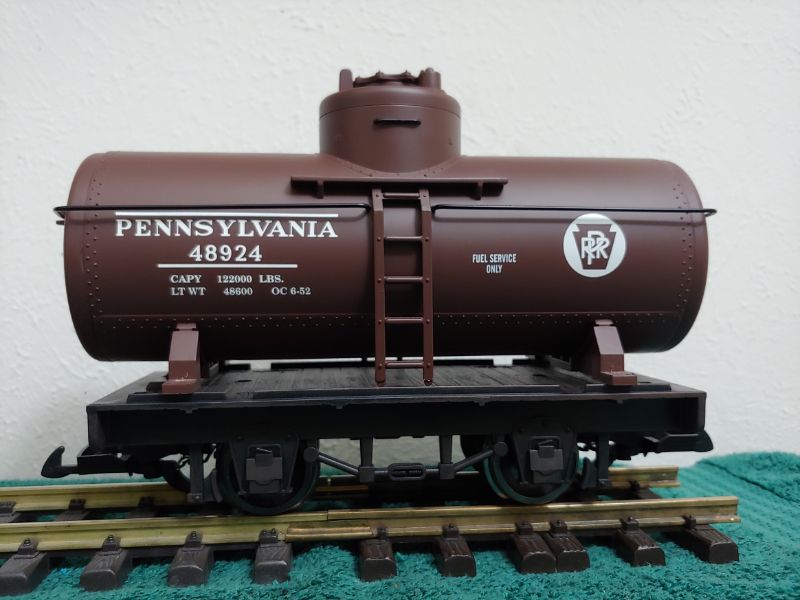
Next was the chassis of that little brown LBH boxcar seen up there earlier. This looked interesting, albeit a bit short on the length department.
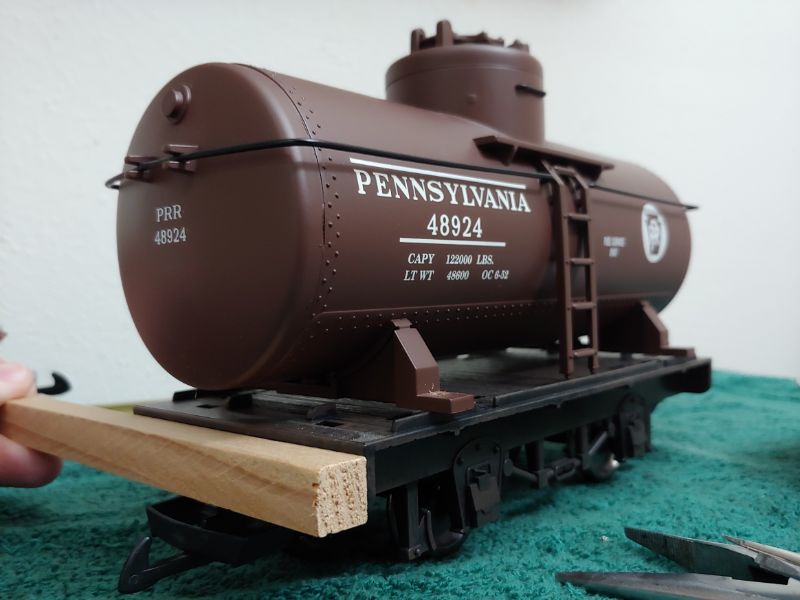
Conceptualizing wooden end beams was interesting to see, but the coupler became a bit obscured under that chunk of timber. Perhaps a longer car…?
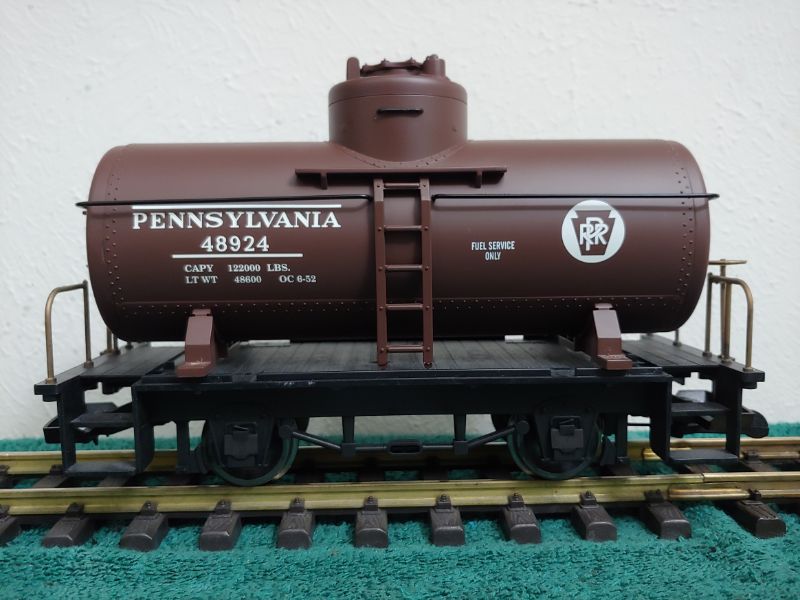
The slightly longer chassis for Bachmann’s L-B-H coaches looked promising with more length and those built-in steps, but with those big foopy hoopy coach handrails? And what about those sky-high brakewheel rods with wheels touching the tank?

With the subsequent purchase of a log-car-thing off the 'Bay that provided an empty coach chassis with free glue damage, at least two sessions of contemplative evening staring occurred, with some Xacto work mingled among the minutes of eyeballing, resulting in the cutting of the outward mounting tabs keeping the shell aloft from the chassis.
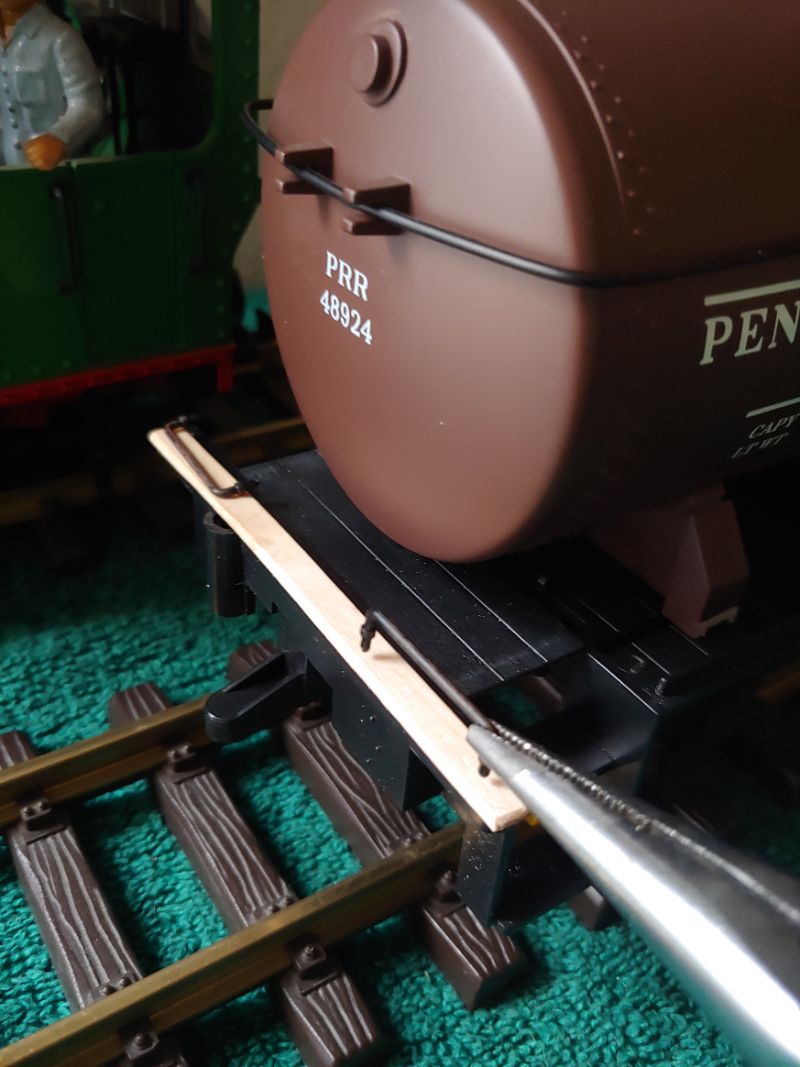
After that, I took off the aforementioned bendy plastic end rods, and with some wood planking (coffee stirrers narrow and wide) and spare railings combined, fabbed a handrail setup that lays low and covers the original mounting holes, as well as spacers that cover the cast holes for the brakes and keep the tank’s feet spaced evenly on the chassis.

…And in conjunction, did some creative drilling of the mounting tubes on the ends, cut off the bottom tabs of of the brake rods, and glued them in on the bottom, effectively lowering the brake wheels to match the low height of the handrails with the limited room around that big fat tank body.

After the construction, it was soon time to paint, and the base color of choice was to remain brown-ish, starting with a spritzing of London Gray.

With only the number and some data masked, all that Pennsy lettering was soon lost to obscurity. 1952 is far too new anyway.
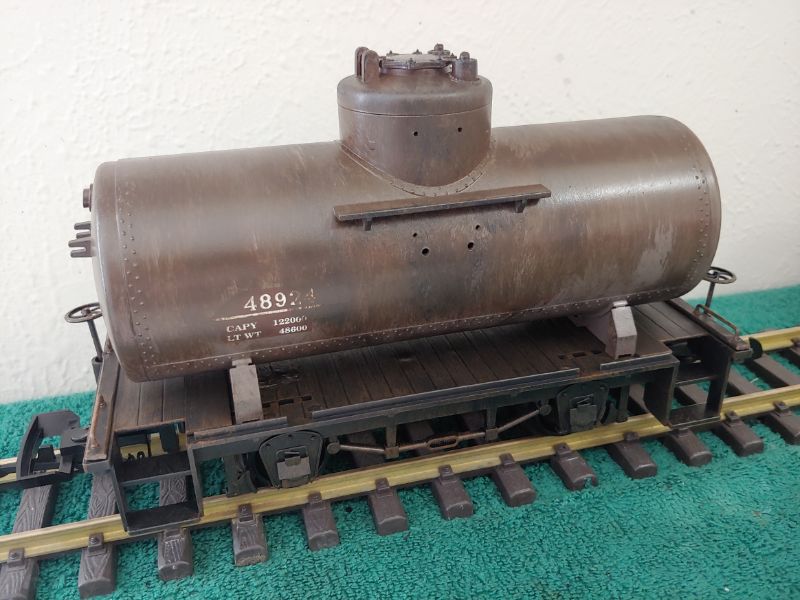
After the initial sprays, my usual mayhem of drybrush weathering took place on the tank and chassis. Looking a bit overwhelmingly messy and corroded at first.
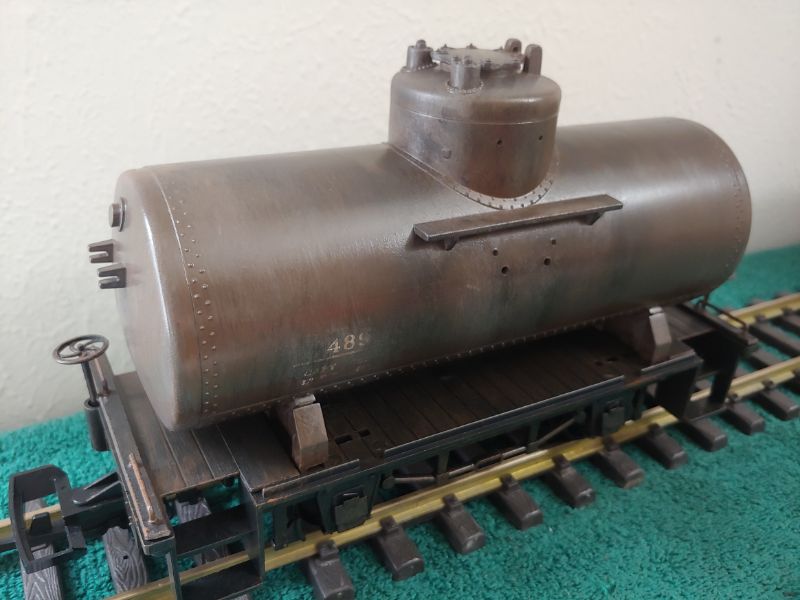
With another couple spritzings of the London Gray to fade the first draft of weathering some, I did another brushing of brown-er and wetter paint. Various minor scuffs and mold dents add variety and were free.

After my usual coatings of Krylon Matte Finish and several days of drying and setting time, I then drilled two holes through the chassis centerline and the center of the mounting feet of the tank body, adding two decent-length screws to secure the body tightly to the chassis. With a pair of the usual Bachmann metal 31mm wheels snapped into place, it was then time for Tanker #489 to join the 2-axle fleet for revenue service on the shelf line.
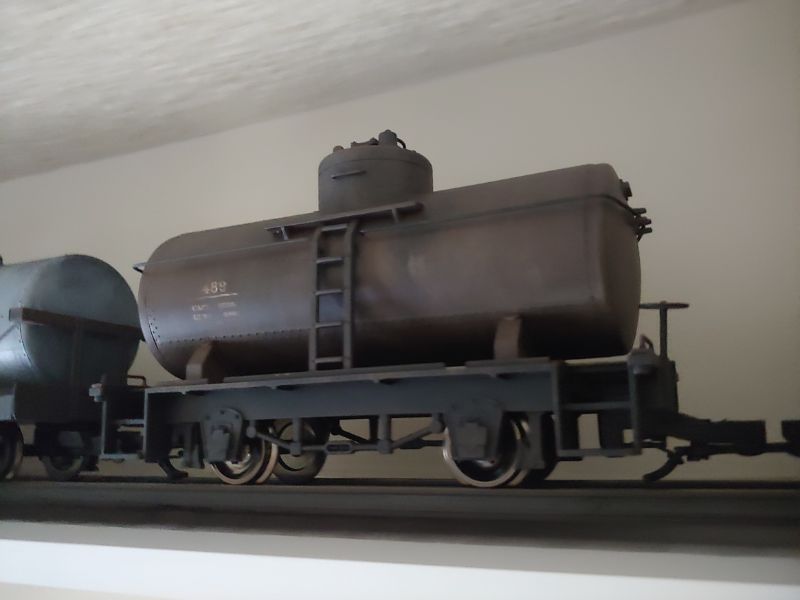
Zooming along with a blue-grey British friend, and looking excellent in motion.
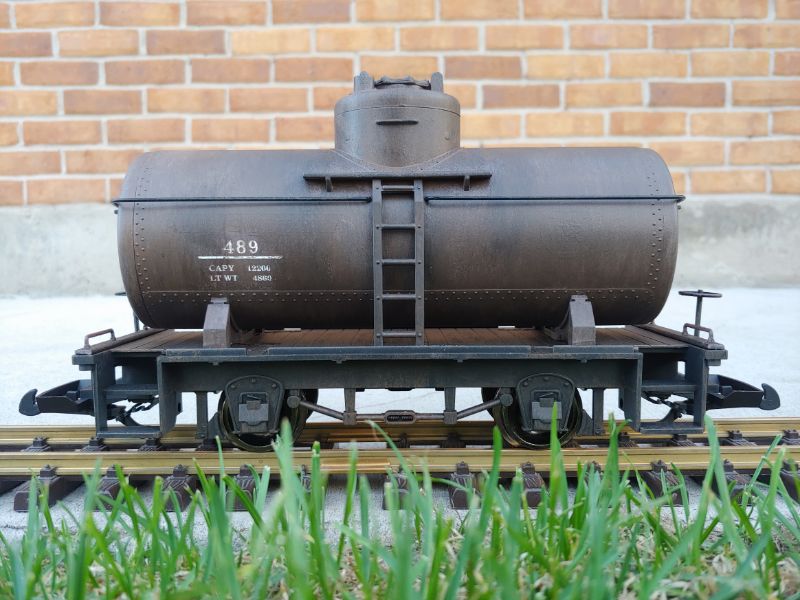
And finally, an image taken outside in natural evening light, with hints of old lettering sleeping beneath the grime and residues. The culmination of slapping two different things together resulted in an interesting new addition to the colonial-export roster, and as it turns out, it isn’t all that far removed from reality.
